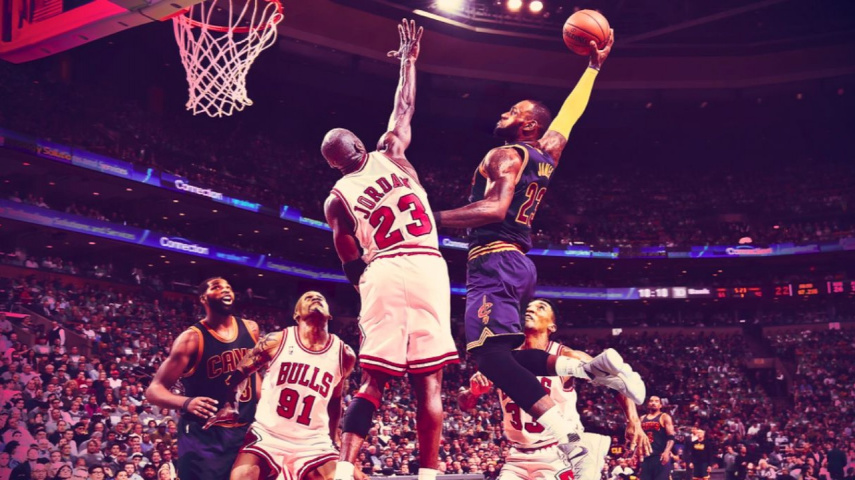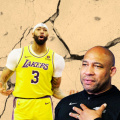Basketball Rules: 14 Common Rules Of Basketball Explained
Learn about the basketball rules and the penalties for breaking them.

People around the globe of all age groups enjoy basketball. This game has many rules, with some being more critical than others.
Being aware of and complying with the essential basketball rules guarantees the game’s fairness, safety, and stability.
Understanding the rules allows players to not only retain their competitiveness but also adhere to the sport's spirit, and avoid accidents resulting from either misunderstandings or faulty interpretation of the rules.
By abiding by these rules, players avoid injuries from unsafe actions such as holding, shoving, tripping, or recklessly colliding with opponents.

When players stick to the rules, they foster an environment of mutual respect and healthy competition. The enforcement of these rules ensures fair and equal play, preventing any unjust privileges and upholding the game’s integrity.
Applying these rules uniformly across all performance levels guarantees that players, irrespective of their location or league, are subject to the same standards and expectations.
What Are the Rules of Basketball?
1. Score Before The Shot Clock Reaches Zero
In basketball, the clock limits the time a team can control the ball for each possession. With 24 seconds permitted in the NBA and WNBA and 30 seconds in NCAA, teams must take their shot under these constraints.

Mounted above each hoop, a ticking shot clock counts down this allocated time. Failing to shoot before the shot clock runs out will result in the team losing the ball and switching on defense.
2. Maximum Five Players On Court
The NBA, WNBA, and NCAA stipulate that only five players from each team can be on the court at any given time. Violation of this fundamental rule results in the team surrendering the ball.
This situation can unintentionally happen, especially at the amateur level, when substitute players fail to exit the court timely after checking into the game.

3. Outscore Opponent To Win
To claim victory, a team needs to accumulate a higher number of field goals than their opponent.
The term 'field goal' denotes any basket that players make during the game. Depending on their location, field goals carry a value of either two or three points.
If a player shoots a field goal from within the three-point line arc on the court, the basket is worth two points.
However, if executed beyond the arc, a field goal nets three points.

The various types of field goals extend to jump shots, layups, slam dunks, and tip-ins.
4. 5-Second Inbound Rule
There's a 5-second rule for ball inbound. When a team scores, the rival team gains ball possession.
A player from this team is required to inbound the ball from a specific spot on the court sideline to restart the game.
This player has a 5-second timeframe to pass the ball to a teammate, failure to which results in a loss of possession.

It's also important to note that the defensive player is not allowed to touch the ball during the inbounding process. If they do, the referee has the right to call it a technical foul.
5. Dribble Moves Ball Forward
In basketball, players can only move the ball up and down the court by passing or dribbling it. Once a player ceases dribbling, they cannot start again; they must either pass the ball or shoot it.
If a player possessing the ball halts dribbling but resumes dribbling before shooting or passing, it's called a "double dribble" by the referee and the ball goes over to the opposing team.

Moreover, players can only move by dribbling the ball, not by running with it in hand - this is called traveling and if done, referees will give the ball to the opposition.
6. Keep the Ball and the Player With the Ball on the Court
The player who has the ball during playtime must remain within the court's boundaries as marked by the inbounds lines.
If a player holding the ball either touches or steps outside these lines, the referee will give the ball to the opposite team.
Also, a shot will not count if a player made it while their foot was touching the line, even if the shot succeeded.

7. Defenders Can’t Block a Shot on Its Way Down
When the offensive player shoots the ball, defensive players must not interfere with it as it starts its descent toward the rim.
The act of interfering is known as goaltending, and it will automatically award a field goal to the offense.

8. Defenders Can Block or Steal the Ball
The defensive team aims to stop the offensive team's scoring efforts by either snatching the ball, obstructing the ball's entry into the basket, or employing defensive strategies to deter the offensive player from shooting and scoring.

9. Defenders Must Leave the Paint After Three Seconds
Sometimes people call the area right before the "the paint" or "inside the key". Offensive players cannot just stay in this area waiting for the ball or an offensive rebound.
Each player can only stay in this space for a max of three seconds before they need to move.
They can come back once they step out of the paint.

If a referee sees a player staying in the paint for more than three seconds, the team gets a three-second violation.
10. Teams Have a Limit on Fouls
Each NBA team is granted five fouls per quarter by the NBA. When a team exceeds this limit, officials put the team "into the bonus".
This refers to rewarding any extra fouls committed by a player in that quarter with free throws for the opposing team.
In the NCAA, these shots from fouls are called "one and one" shots. If a player succeeds in making the first free throw, they're allowed a second one.
If they fail to make the first throw, either of the teams has the chance to rebound the missed shot and gain possession.

Beyond 10 team fouls, the opposing team benefits from a "double bonus", allowing them to take two shots for each foul.
11. Illegal Contact Is Penalized With a Foul
Referees call a personal foul when a basketball player makes illegal physical contact with another player.
Most of these fouls occur when one player hinders the gameplay of an opponent.
If a player commits a foul against an opponent who is in the act of shooting, the fouled player will merit unguarded free throws from the foul line as a reward.

Every successful free throw adds one point. If a coach exhibits unsportsmanlike behavior, like using profanity to argue a missed call, a referee has the authority to assess them with fouls.
12. A Personal Foul Is Called for Illegal Contact
Personal fouls break the game's rules. Players earn these fouls if they block, push, or strike another player amid shooting.
The penalization for shooting fouls is free throw attempts for the player who got fouled. If a defender fouls a shooter during a two-point shot attempt, the fouled shooter gets two free throws.
Similarly, three free throws go to a shooter fouled during a three-point shot attempt.

The shooter also gets one free throw if they successfully make the shot they were attempting when the illegal contact occurred - plus, the basket counts.
13. Excessive Contact Results in a Flagrant Foul
A flagrant foul is a kind of personal foul that poses a threat to the opponent's safety. Punishments for these fouls are harsh, including immediate disqualification, fines, and possible suspensions.
We can split flagrant fouls into two categories: Flagrant 1 and Flagrant 2.
Unnecessary contact is the basis for a Flagrant 1 foul, which leads to a free throw and ball possession for the opposing team. Meanwhile, Flagrant 2 fouls involve unnecessary and excessive contact.

The referee will review the replay promptly to see if the action calls for a Flagrant 2 penalty.
Should they decide in the affirmative, the violating player will be fined, and automatically ejected from the game, and the opponent team will earn free throws along with ball possession.
14. Technical Fouls Are Given for Certain Rule Violations
Technical fouls penalize breaches of administrative rules in the game. Common examples include fighting and verbal abuse, and referees often throw these at coaches who become overly argumentative about a call.

The response to a technical foul is a free throw and a switch of possession.
If a player or coach racks up two technical fouls in one game, they'll face ejection.
A record filled with technical fouls can even lead to suspension from regular season and playoff games.
ALSO READ: What is Take Foul in NBA and how is it different from Clear Path Foul?





 JOIN OUR WHATSAPP CHANNEL
JOIN OUR WHATSAPP CHANNEL



































































































